Podcast Features
What do you want to learn more about?
Mentorship Program, 1:1 Nutrition Coaching with Alison
The Wholesome Journey - Group Nutrition Coaching Program
December 14, 2018
Alison Tierney, MS, RD, CD, CSO
Alison is a registered dietitian, board-certified in oncology nutrition, and a cancer thriver. Her expertise in oncology nutrition and personal experience with her own cancer diagnosis and its treatment provide her with the unique perspective of being able to relate to her clients on an entirely different level. Her content is consistently focused on evidence-based guidelines and seeks to increase the awareness of the power of nutrition to complement traditional cancer therapies.
- Alison Tierney, MS, RD, CD, CSOhttps://wholesomellc.com/author/alisonwholesomellc-com/
- Alison Tierney, MS, RD, CD, CSOhttps://wholesomellc.com/author/alisonwholesomellc-com/
- Alison Tierney, MS, RD, CD, CSOhttps://wholesomellc.com/author/alisonwholesomellc-com/
- Alison Tierney, MS, RD, CD, CSOhttps://wholesomellc.com/author/alisonwholesomellc-com/
Sugar. Sugar. Sugar. It’s a popular topic in the health world. We know it’s in cookies, cakes, pies, and all the good stuff. But it’s also hidden in foods we wouldn’t expect.

Before you read any further, know this blog post is not focused on sugar naturally found in whole foods like fruit!
We’re not here to tell you “never eat sugar,” because our bodies need sugar to function properly. (Plus, we love a tasty treat from time to time.)
Let us explain.
Anytime we consume carbohydrates, our body converts the carbohydrates to glucose, or sugar. You can think of sugar and glucose as interchangeable words. Glucose is the primary fuel source of every single cell in our body. It gives our body the energy it needs.
It is so important, that our body will make its own if we don’t have the glucose our body needs. Our bodies can make sugar through a process called gluconeogenesis. We won’t bore you with the biochemistry details, but our bodies can make glucose from amino acids and fat.
Want to hear Alison explain a little more about how sugar works in our bodies? Want to learn more about the concept ‘Sugar Feeding Cancer’? Check out our Facebook Live.
The bottom line is, our bodies require sugar/glucose to function properly.
But just like all calories, excessive consumption of calories from sugar or carbohydrates can lead to weight gain. Therefore, we should be cautious of the hidden or added sugars in our diet.
Here is a great thing to remember when it comes to the measurement of sugar:
4 grams of sugar = 1 teaspoon
E.g. If something has 12 grams of sugar per serving, that has 3 teaspoons (or, 1 tablespoon).
The American Heart Association recommends limiting your added sugar intake to 24 grams per day. Sugar adds up very quickly, and you’ll see just how fast with the popular products below.
Milk
Since we focus on the prevention and management of cancer and chronic diseases, we don’t advocate drinking cow’s milk for many reasons. You can learn more about some of those reasons here.
But we do want to point something out about cow’s milk. While the sugar found in cow’s milk is natural, what most people don’t know is that there are 12 grams of sugar per every one cup of cow’s milk (doesn’t matter if it’s whole, 2%, 1%, or skim milk). Although it’s natural sugar, milk doesn’t have fiber like a piece of fruit would, which is why we need to use caution when drinking it.
When it comes to non-dairy milk, pay close attention to the ingredients. Below, you will see there are 13 grams of sugar in Vanilla Almond Milk. If you choose the unsweetened version, you’ll notice 0 grams of sugar.
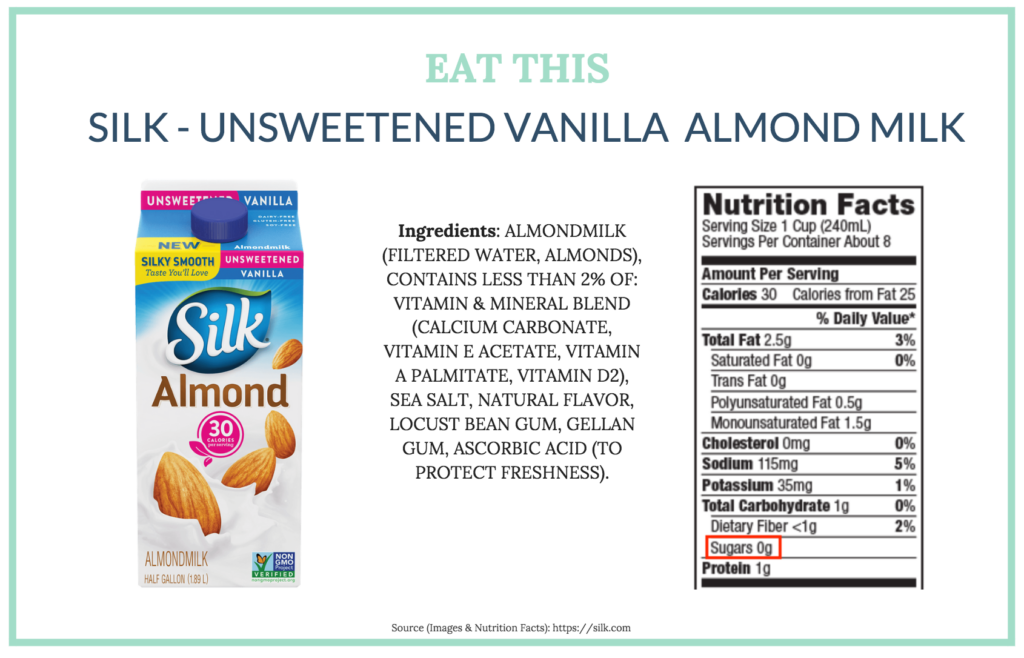
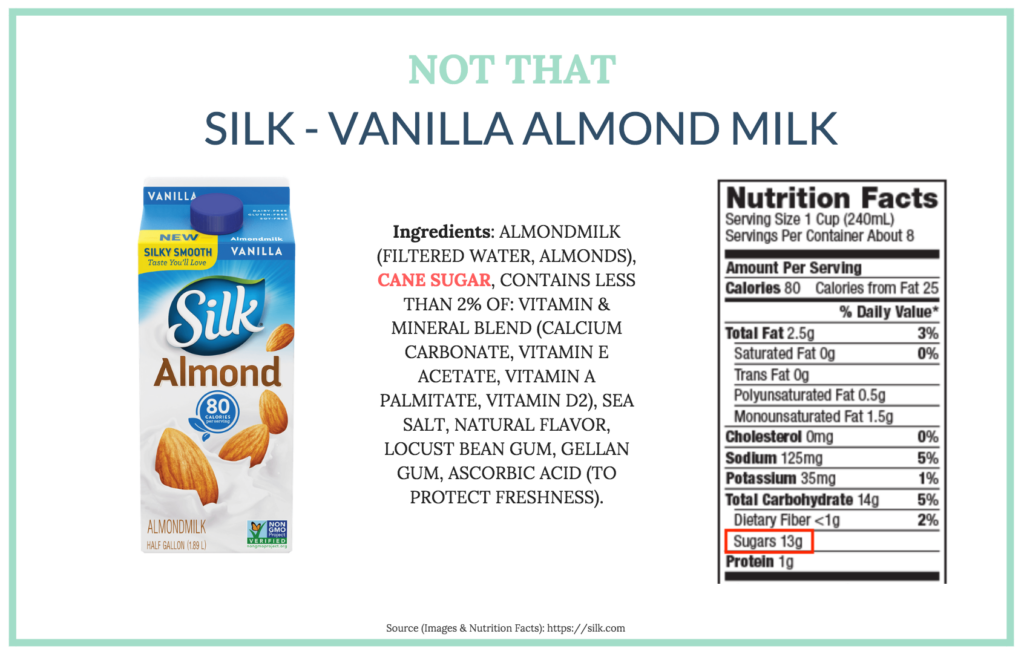
Oatmeal
We know it seems uber convenient to have instant oatmeal packets ready to go, but most of them are packed with sugar AND have a laundry list of ingredients.
Imagine this. Lauren used to eat Quaker Maple & Brown Sugar instant oatmeal packets. One packet has 13 grams of sugar. Plus, she used cow’s milk to make it, which added another 9 grams of sugar (3/4 cup). That’s 22 grams of sugar in a small serving of oatmeal — almost 2 tablespoons of sugar.
Now, she makes her own oatmeal with old-fashioned oats and sweetens it with her own ingredients like date crumbles and fresh fruit. Plus, you can make overnight oats to save time in the morning!
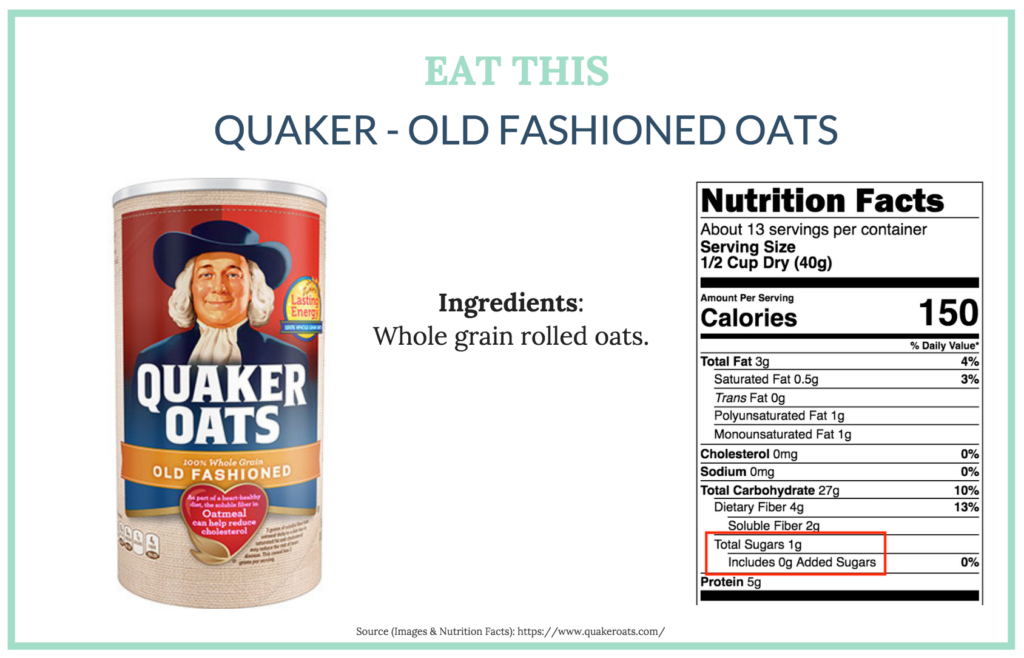
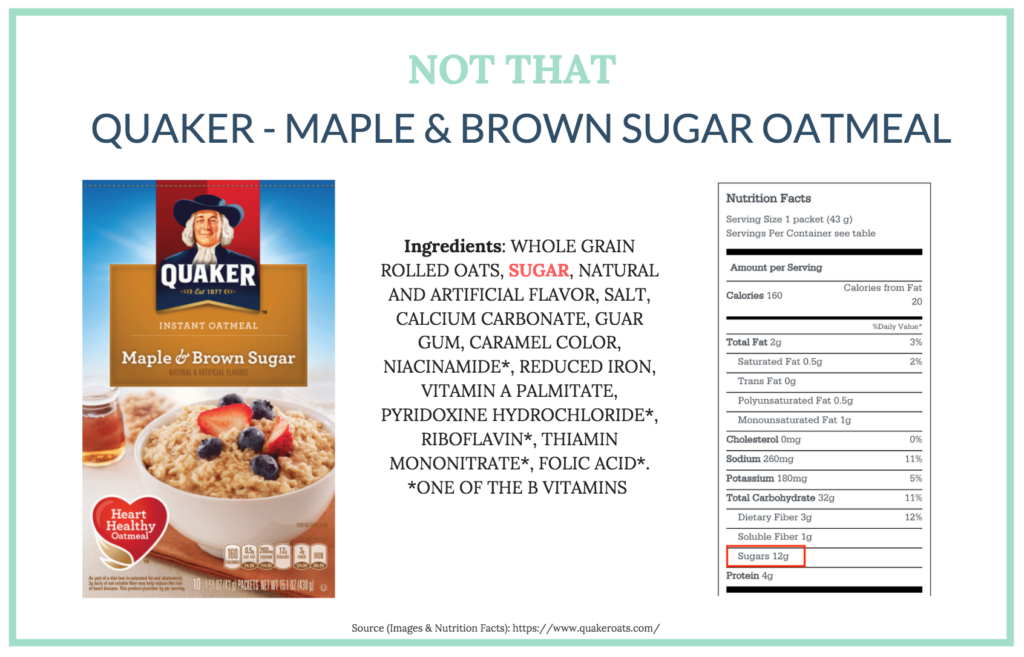
Energy/Granola Bars
Clif Bar is not a company I want to put a ‘Not That’ stamp on. Honestly, I think they make a great product. But, we still need to watch our sugar intake. One bar has 21 grams of sugar!
If you love Clif Bars, try only eating half of the Clif Bar at a time. Plus, if you’re not climbing mountains all day, it should probably be a treat, not a quick everyday breakfast.
If you are looking for a great ‘on-the-go’ bar, we love Larabars. You will still need to watch the added sugar for their chocolate varieties, but their ‘Cashew Cookie’ has two simple ingredients — cashews and dates. While the label says 15 grams of sugar, it’s from the sugar naturally found in dates and thus contains fiber.
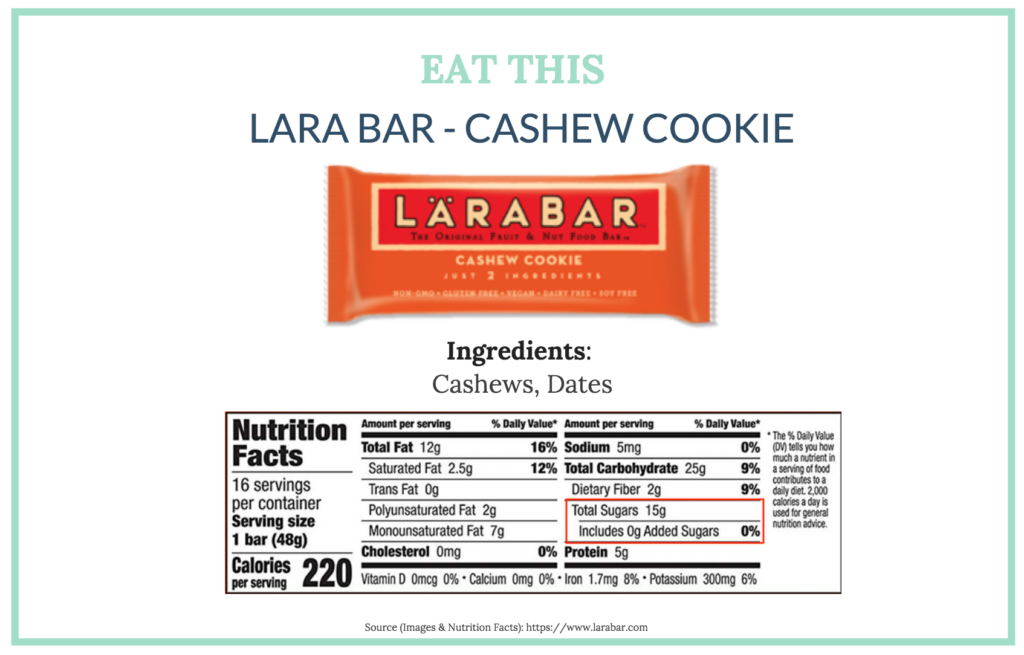
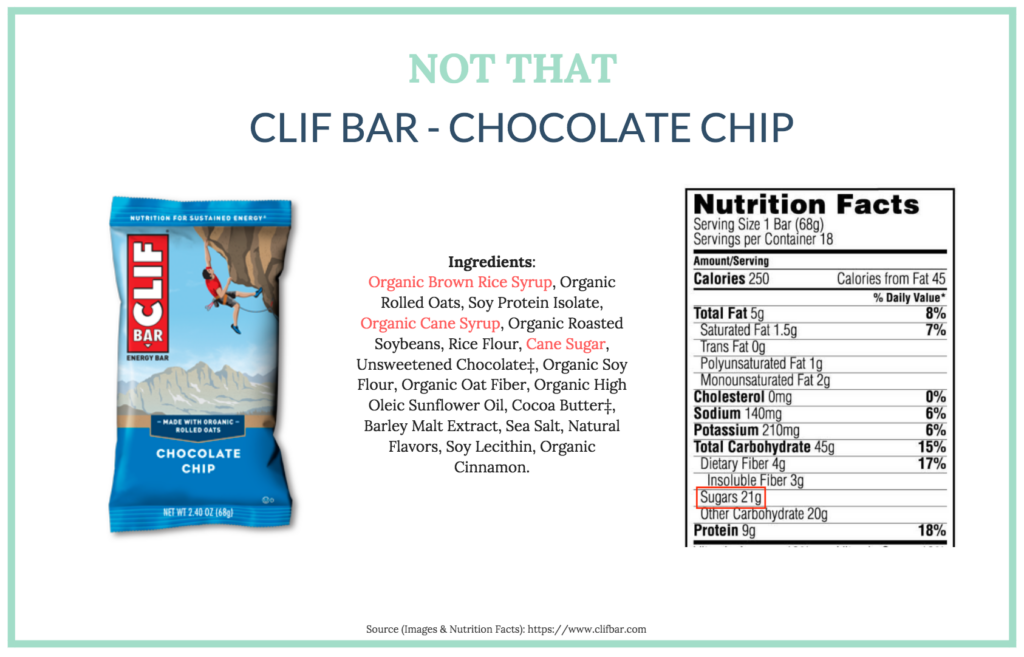
When it comes down to it, check the nutrition label. Just because it’s marketed as ‘healthy’ or ‘natural’ doesn’t mean sugar wasn’t added. Here is a list of ingredients that denote added sugar:
- Malt sugar
- Molasses
- Raw sugar
- Sugar
- Sugar molecules ending in “ose” (dextrose, fructose, glucose, lactose, maltose, sucrose)
- Syrup
- Brown sugar
- Corn sweetener
- Corn syrup
- Fruit juice concentrates
- High-fructose corn syrup
- Honey
- Invert sugar
What are your favorite foods with minimal added sugar? Tell us below!
Eat This, Not That – Hidden Sugar
Wholesome LLC is not a medical practice, and its employees cannot offer medical advice. This website provides educational information but it is not a substitute for medical advice from a licensed medical professional who is familiar with your particular facts and circumstances. The information contained on this website is not intended to diagnose, treat, or cure any disease and shall not be construed as medical advice. The information and education on this website is provided for you to use at your own discretion.
You can further review our disclaimer here.
Wholesome
About Alison
Courses & Programs
The Wholesome Journey
Free Resources
FAQs
Press & Media
Recipes
Blog
Contact Us
Shop
© 2025 Wholesome, LLC All rights reserved.
Privacy Policy
Terms of Use
Disclaimer
Mobile Terms of Service